Discover the art of Growing Potatoes from planting to harvesting. Our comprehensive guide unveils expert tips, step-by-step instructions, and valuable insights to help you master Potato cultivation like a pro. Unlock the path to a bountiful harvest and savor the delicious rewards of your homegrown potatoes.
Potatoes are a staple food enjoyed worldwide, and there’s nothing quite like the satisfaction of growing your own. Whether you’re an experienced gardener or a beginner, cultivating potatoes can be a rewarding and enjoyable experience. In this comprehensive guide, we’ll explore the entire journey of potato cultivation, from planting to harvesting, ensuring you have all the knowledge you need for a successful potato-growing season.
Potato Types
Before diving into the cultivation process, let’s familiarize ourselves with the different types of potatoes:
1. Russet potatoes
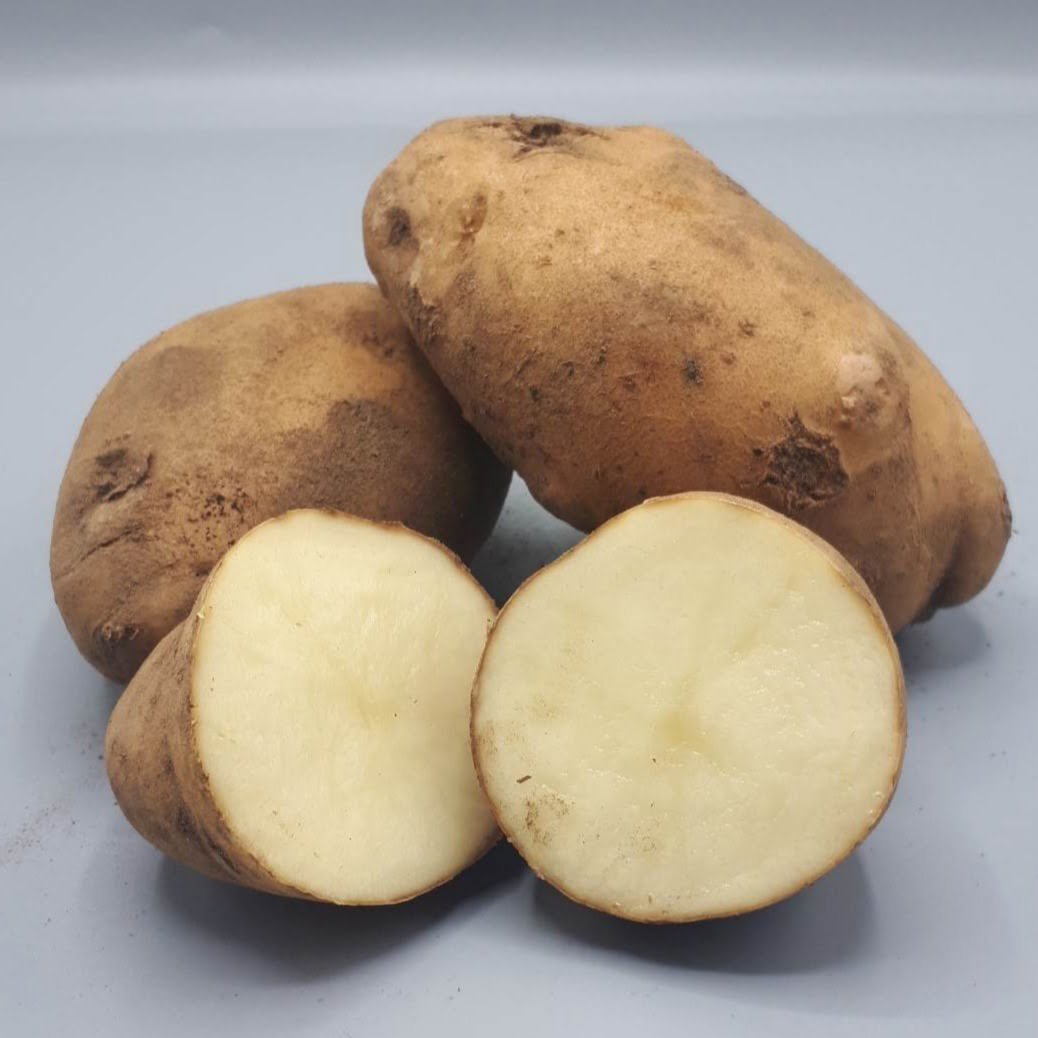
Here’s a short information chart for Russet potatoes:
| Attribute | Information |
|---|---|
| Botanical Name | Solanum tuberosum ‘Russet’ |
| Plant Type | Annual vegetable |
| Soil Type | Well-drained, sandy or loamy soil |
| Color Varieties | Brown skin with white flesh |
| Zones | 3-9 (USDA Hardiness Zones) |
| Exposure | Full sun |
| Bloom Time | Mid to late summer |
| Height/Spread | 2-3 feet tall / 1-2 feet wide |
These are the classic baking potatoes with a thick, rough brown skin and fluffy white flesh. Popular varieties include Russet Burbank and Norkotah.
2. White potatoes
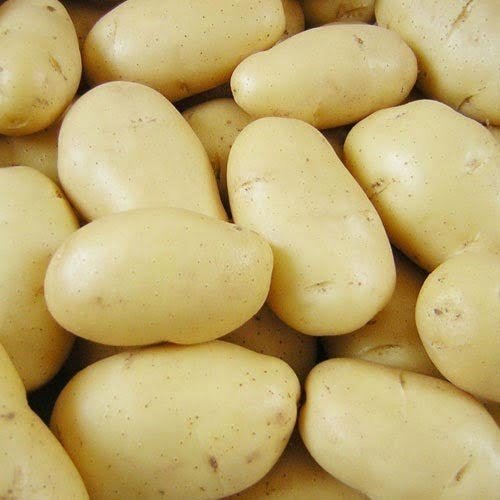
Here’s a short information chart for White potatoes:
| Attribute | Information |
|---|---|
| Botanical Name | Solanum tuberosum |
| Plant Type | Annual vegetable |
| Soil Type | Well-drained, sandy or loamy soil |
| Color Varieties | Light brown or tan skin with white flesh |
| Zones | 3-9 (USDA Hardiness Zones) |
| Exposure | Full sun |
| Bloom Time | Mid to late summer |
| Height/Spread | 2-3 feet tall / 1-2 feet wide |
As the name suggests, these potatoes have a smooth, thin white skin and a creamy white flesh. They’re great for boiling, mashing, and salads. Examples include Yukon Gold and Kennebec.
3. Red potatoes
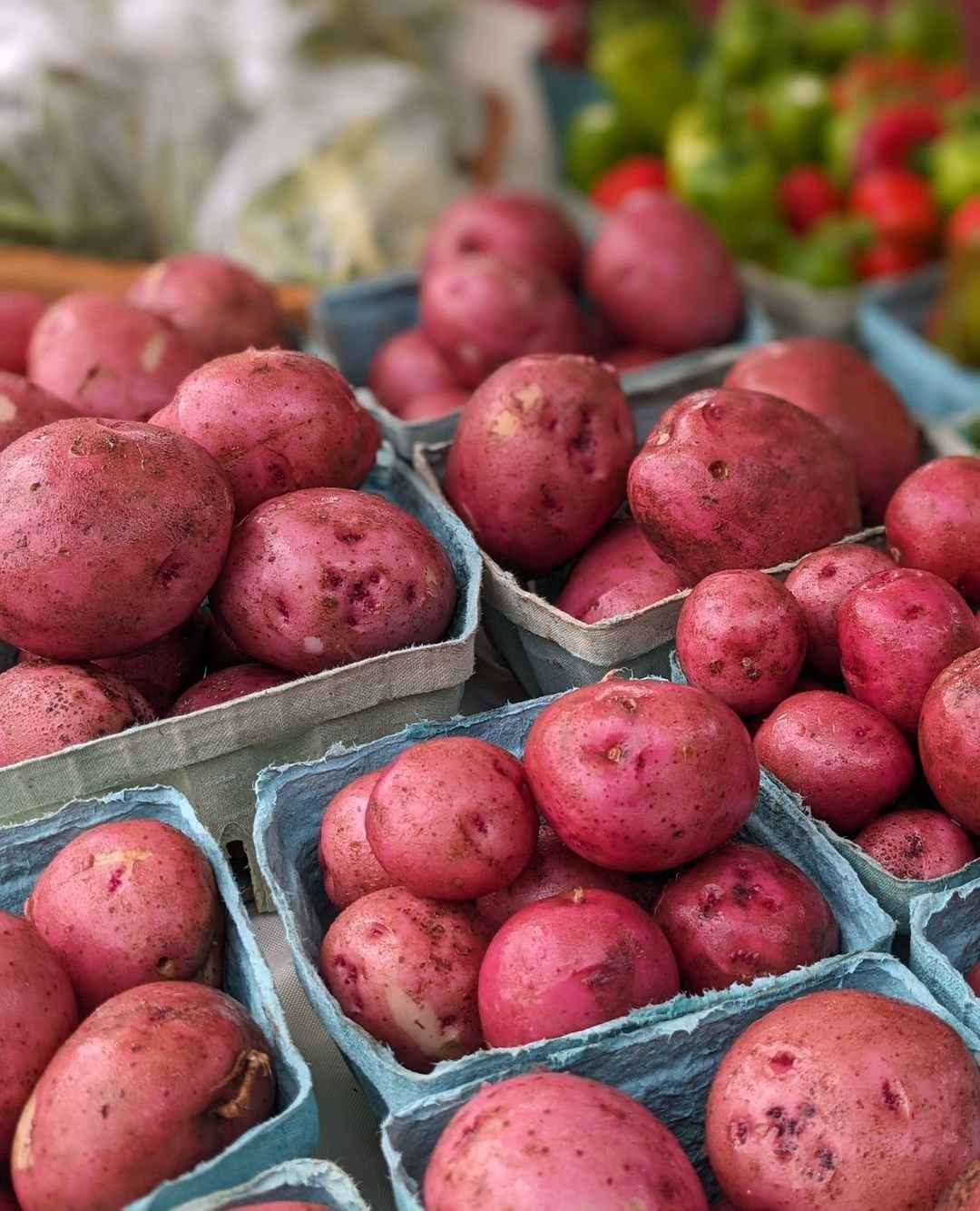
Here’s a short information chart for Red potatoes:
| Attribute | Information |
|---|---|
| Botanical Name | Solanum tuberosum |
| Plant Type | Annual vegetable |
| Soil Type | Well-drained, sandy or loamy soil |
| Color Varieties | Red skin with white flesh |
| Zones | 3-9 (USDA Hardiness Zones) |
| Exposure | Full sun |
| Bloom Time | Mid to late summer |
| Height/Spread | 1-3 feet tall / 1-2 feet wide |
With their vibrant red skin and firm, waxy flesh, these potatoes are perfect for roasting, boiling, and salads. Red Pontiac and Red Norland are widely grown varieties.
4. Yellow/Golden potatoes
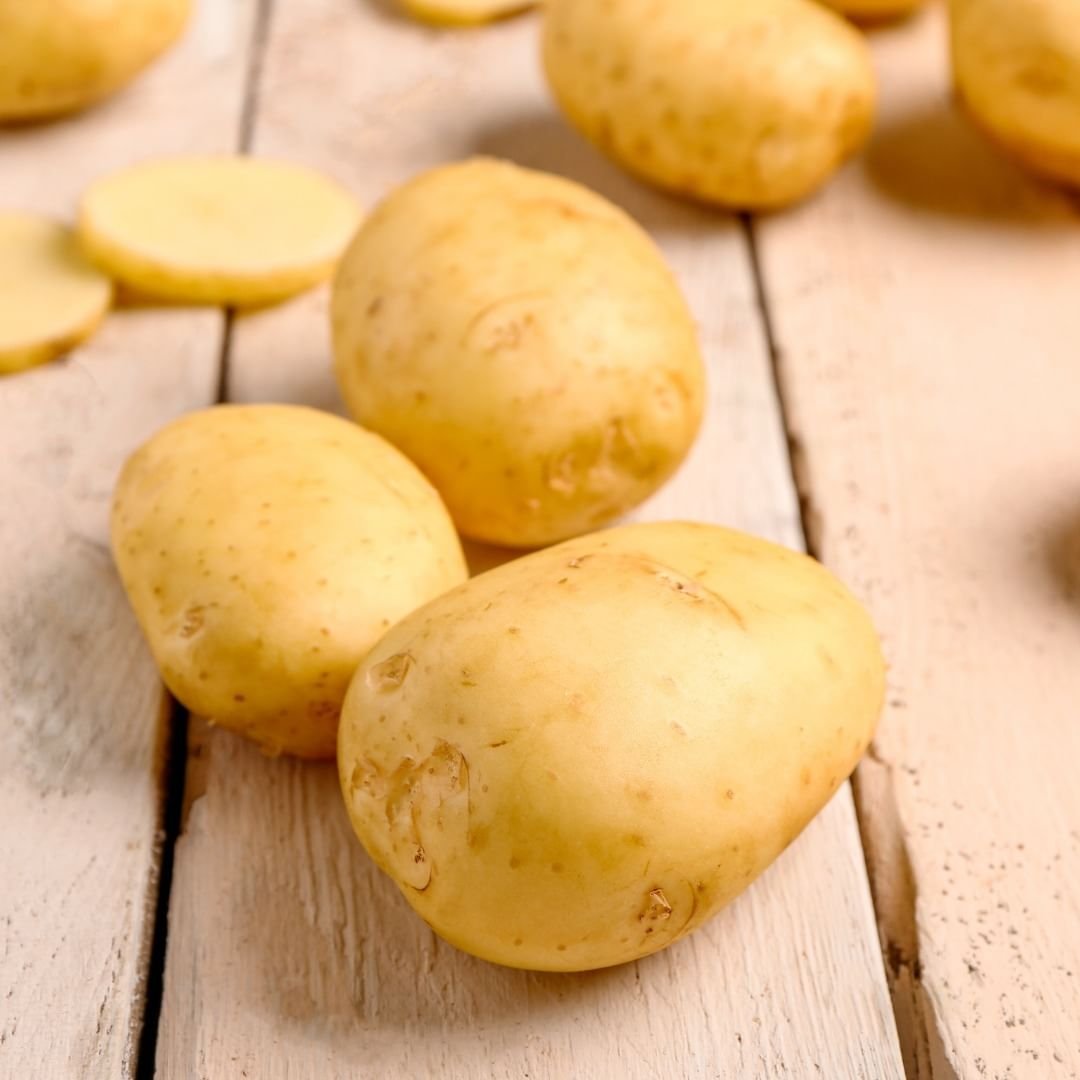
| Attribute | Information |
|---|---|
| Botanical Name | Solanum tuberosum |
| Plant Type | Annual vegetable |
| Soil Type | Well-drained, sandy or loamy soil |
| Color Varieties | Yellow or golden skin with yellow flesh |
| Zones | 3-9 (USDA Hardiness Zones) |
| Exposure | Full sun |
| Bloom Time | Mid to late summer |
| Height/Spread | 1-3 feet tall / 1-2 feet wide |
These potatoes have a rich, buttery flavor and a creamy yellow flesh. They’re versatile for baking, frying, and roasting. Yukon Gold is a popular yellow variety.
5. Blue/Purple potatoes
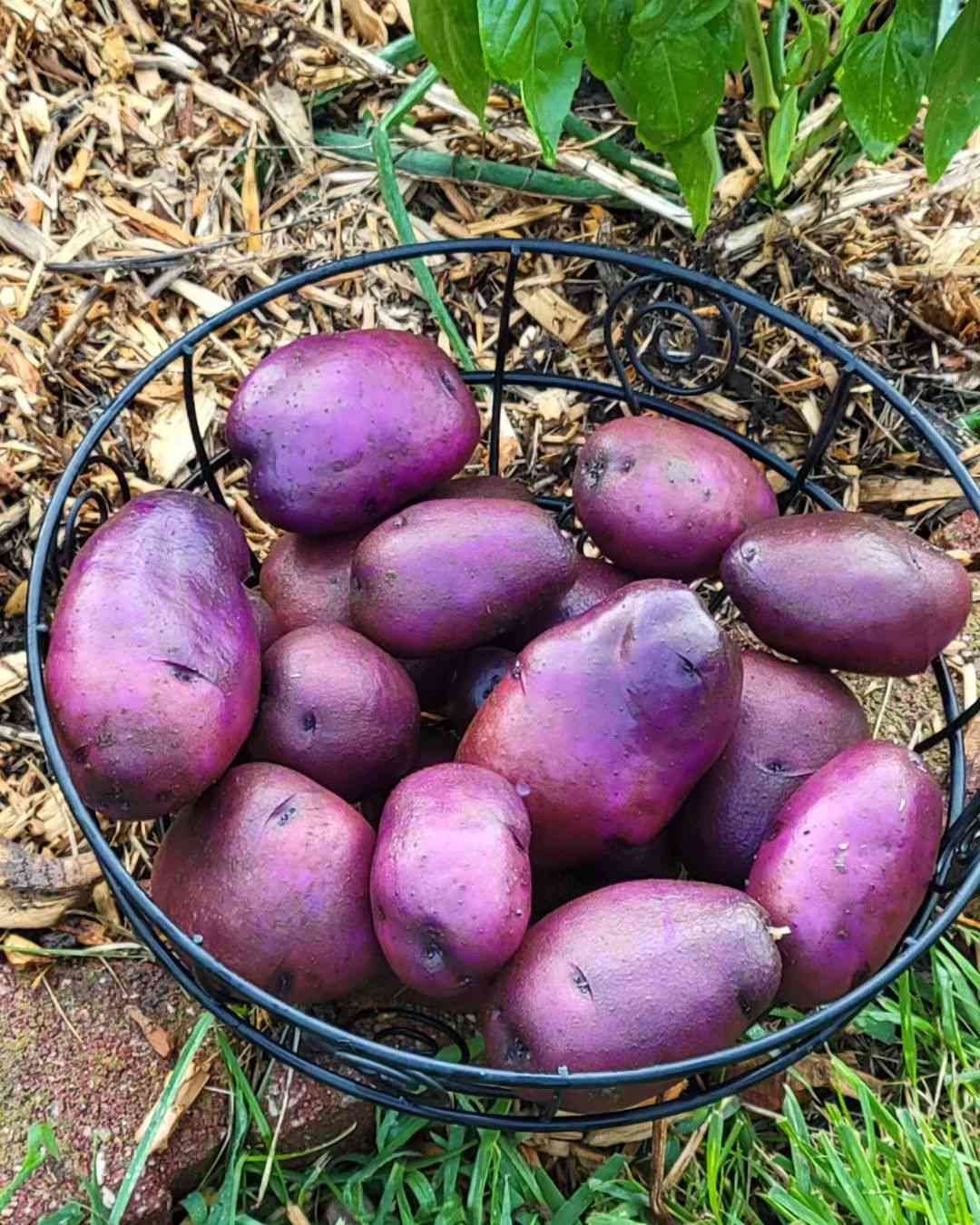
Here’s a short information chart for Blue/Purple potatoes:
| Attribute | Information |
|---|---|
| Botanical Name | Solanum tuberosum |
| Plant Type | Annual vegetable |
| Soil Type | Well-drained, sandy or loamy soil |
| Color Varieties | Blue or purple skin with blue, purple, or white flesh |
| Zones | 3-9 (USDA Hardiness Zones) |
| Exposure | Full sun |
| Bloom Time | Mid to late summer |
| Height/Spread | 1-3 feet tall / 1-2 feet wide |
These unique potatoes have a striking blue or purple hue and a slightly nutty flavor. They’re packed with antioxidants and make for a colorful addition to dishes. Examples include Adirondack Blue and Purple Majesty.
Choosing the Right Variety
When selecting a potato variety, consider factors such as maturity time, disease resistance and intended use (baking, frying or boiling). Some varieties are better suited for specific purposes, so choose wisely based on your preferences and growing conditions.
Preparing the Soil
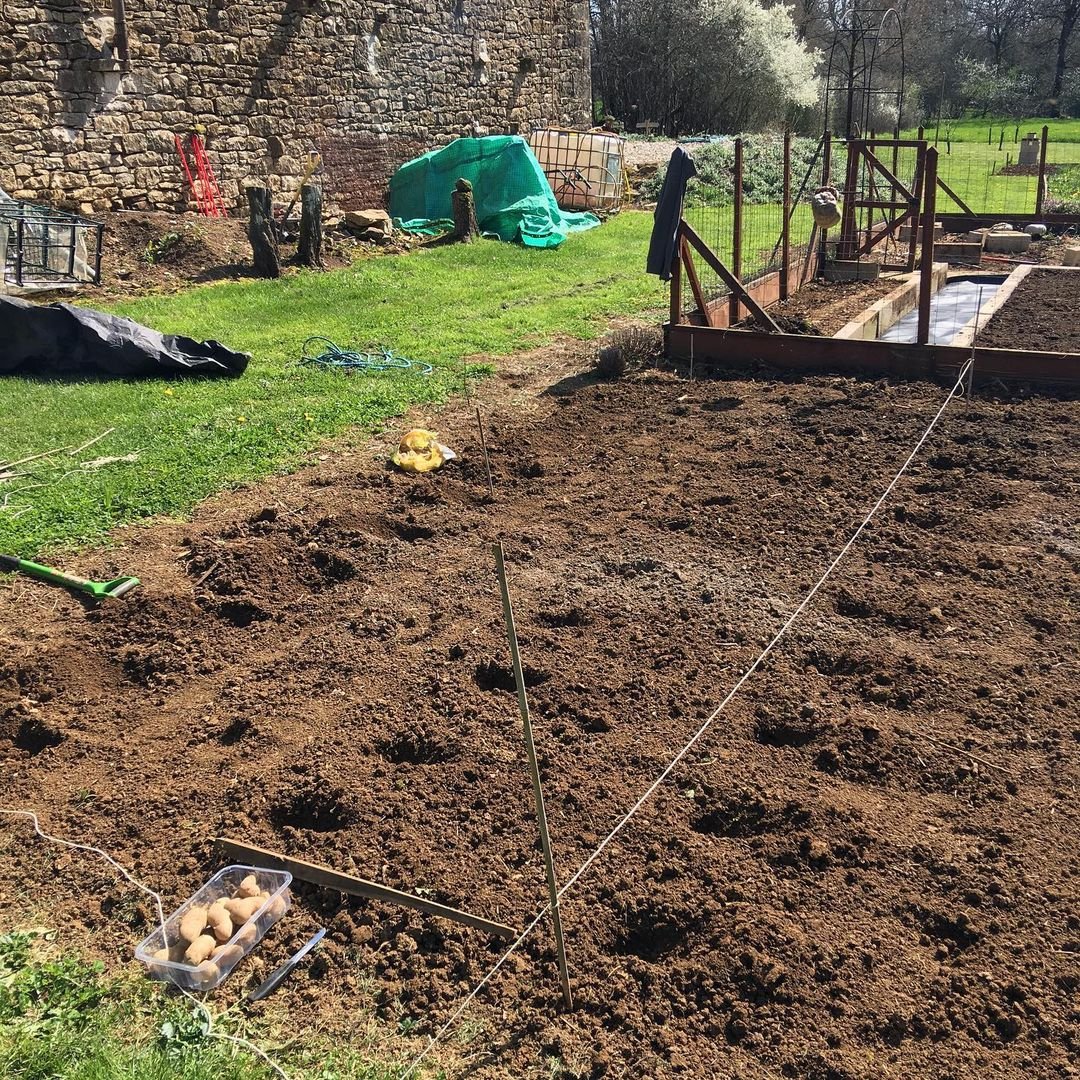
Potatoes thrive in well-draining, loose soil with a slightly acidic pH range of 5.0 to 6.5. Enrich the soil with compost or well-rotted manure before planting to provide essential nutrients. Avoid areas where potatoes or related plants (like tomatoes or eggplants) were grown in the previous year to prevent soil-borne diseases.
Planting Potatoes

Timing is crucial when planting potatoes. In most regions, the optimal time is two to three weeks before the last expected frost date in spring. Here’s how to plant:
- Cut seed potatoes into pieces, ensuring each piece has at least one or two eyes (sprouts). Allow the cut surfaces to dry for a day or two before planting.
- Dig trenches or hills approximately 8 inches deep and 12 inches wide, spacing them 2-3 feet apart.
- Place the seed potato pieces cut-side down, spacing them 12 inches apart in the trench or hill.
- Cover the seed potatoes with 3-4 inches of soil.
Hilling and Caring for Plants
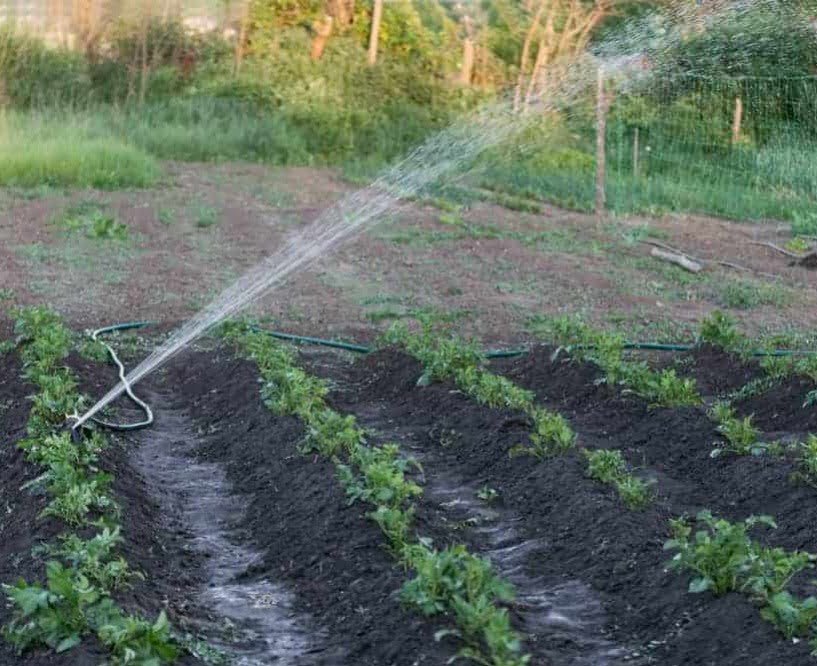
As the potato plants grow, you’ll need to hill them periodically to encourage more potato production and protect the developing tubers from sunlight. Here’s how:
- When the stems reach 6-8 inches tall, gently mound soil around the base of the plants, leaving 4-6 inches of stem exposed.
- Repeat the hilling process every 2-3 weeks, eventually creating a mound 8-10 inches tall.
- Water the plants regularly, ensuring the soil remains consistently moist but not waterlogged. Aim for 1-2 inches of water per week, either through rainfall or irrigation.
- Mulch around the plants to conserve moisture and suppress weeds. Use organic materials like straw, leaves, or grass clippings.
- Fertilize the plants with a balanced fertilizer or compost tea every 4-6 weeks to provide essential nutrients for optimal growth.
Dealing with Pests and Diseases

Potatoes are susceptible to various pests and diseases, so it’s essential to be vigilant. Common issues include:
- Colorado potato beetles: These striped beetles can quickly defoliate potato plants. Control them by hand-picking, using row covers, or applying approved insecticides.
- Late blight: This fungal disease causes brown lesions on leaves and can spread quickly in warm, humid conditions. Use resistant varieties and apply fungicides if necessary.
- Scab: This soil-borne disease causes rough, corky patches on tubers. Maintain proper soil pH and rotate crops to prevent its spread.
- Aphids: These tiny pests can transmit viruses and cause stunted growth. Use insecticidal soaps or strong water sprays to dislodge them.
Harvesting and Storing Potatoes
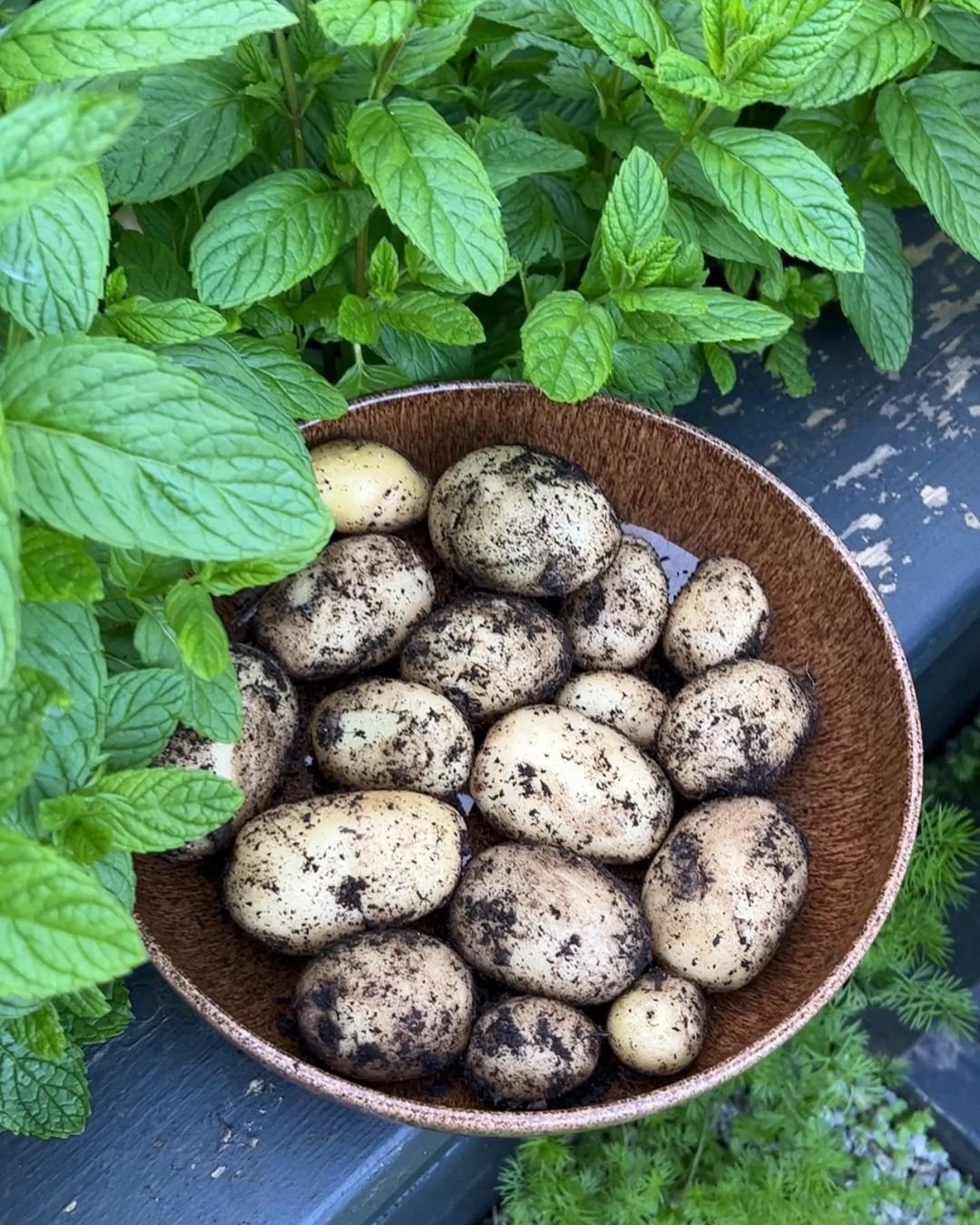
Knowing when to harvest potatoes is crucial for maximizing their flavor and storage potential. Here’s what you need to know:
- New potatoes (immature tubers) can be harvested about 2-3 weeks after the plants have flowered. Gently dig around the base of the plant and collect the small, thin-skinned tubers.
- For mature potatoes, wait until the plant’s foliage has died back completely, typically 10-14 weeks after planting.
- Use a fork or spading fork to carefully dig around the plant, lifting the tubers out of the soil.
- Cure the harvested potatoes by keeping them in a dark, well-ventilated area for 1-2 weeks before storing.
- Store cured potatoes in a cool, dark place with high humidity, such as a root cellar or basement, at temperatures between 45-50°F (7-10°C).
Growing potatoes can be a rewarding and enjoyable experience, whether you’re a seasoned gardener or a beginner. By following these step-by-step instructions and tips, you’ll be well on your way to producing a bountiful harvest of delicious, homegrown potatoes. Remember to choose the right variety, prepare the soil properly, provide adequate care throughout the growing season, and harvest and store your potatoes correctly. With patience and attention to detail, you’ll be able to savor the fruits (or tubers) of your labor for months to come.
Pingback: Potato Growth Stages: How to Plant, Grow and Ha...
Pingback: Rainbow Roses: Unveiling the Mystery Behind Vibrant Hues
Pingback: Eucalyptus Plants: Ultimate Guide to Growing and Caring
Pingback: The Ultimate Guide to Chicken Manure Pellets: Benefits, Application and Best Practices
Pingback: Power of Chicken Manure Pellets: A Gardener’s Guide to Nutrient-Rich Goodness
Pingback: Esperanza Plant: Tips for Care and Successful Growing
Pingback: Umbrella Tree: A Comprehensive Guide to Cultivation - Gardener's School
Pingback: Creating a Vegetable Garden: Easy Vegetables to Grow
Pingback: Prickly Pear Cactus (Opuntia) : Comprehensive Guide to Caring
Pingback: Jade Plant: A Comprehensive Guide to Growing and Caring for Crassula Ovata
Pingback: Flowering Tobacco : Essential Care Tips for Lush Blooms